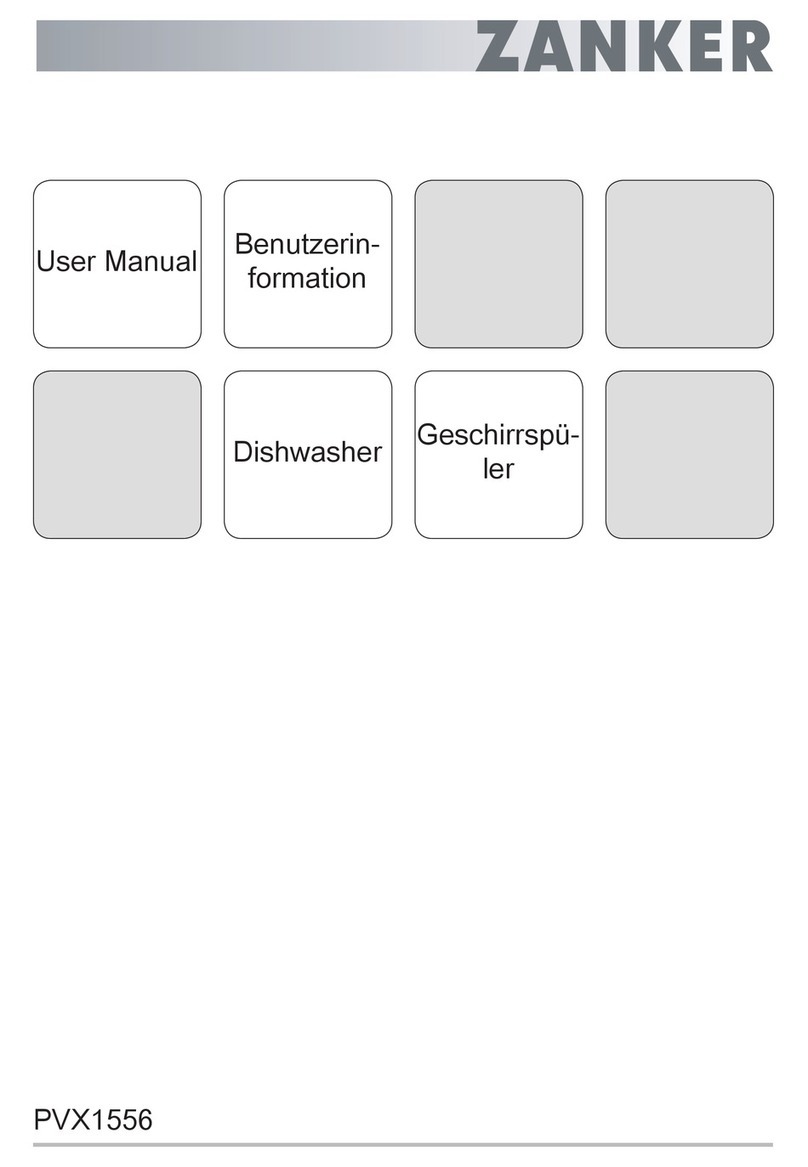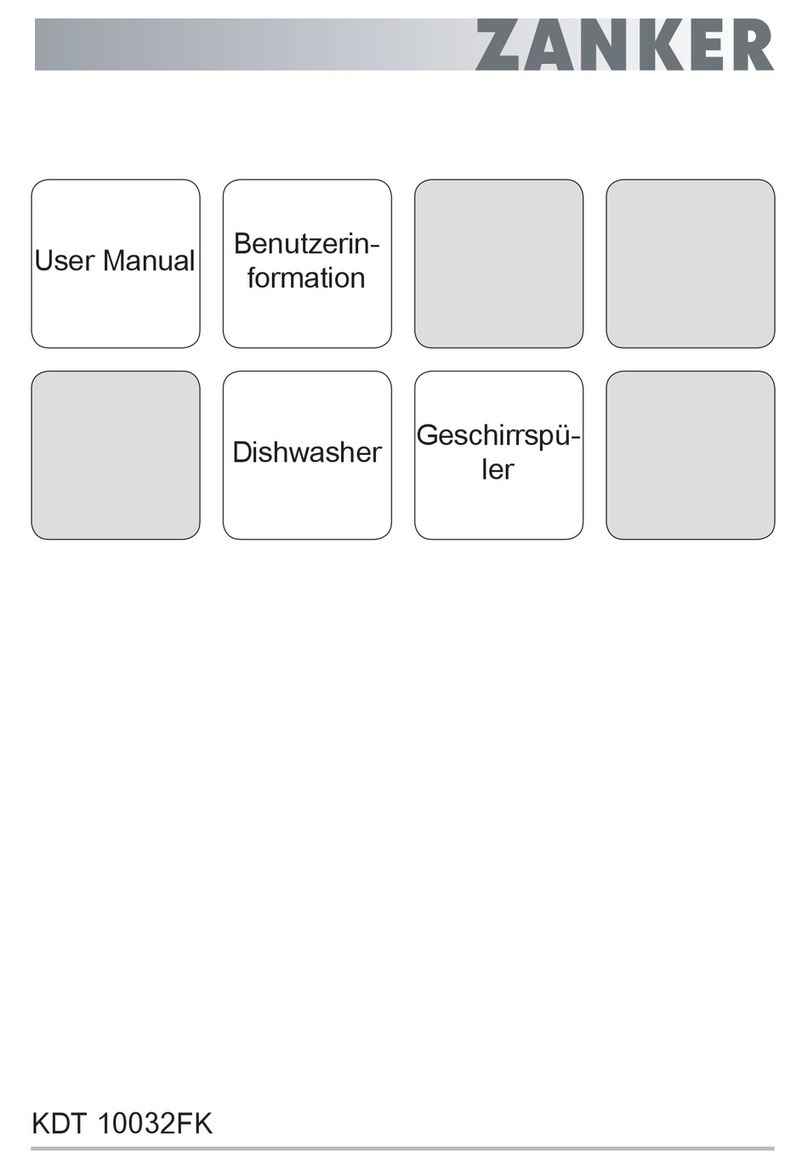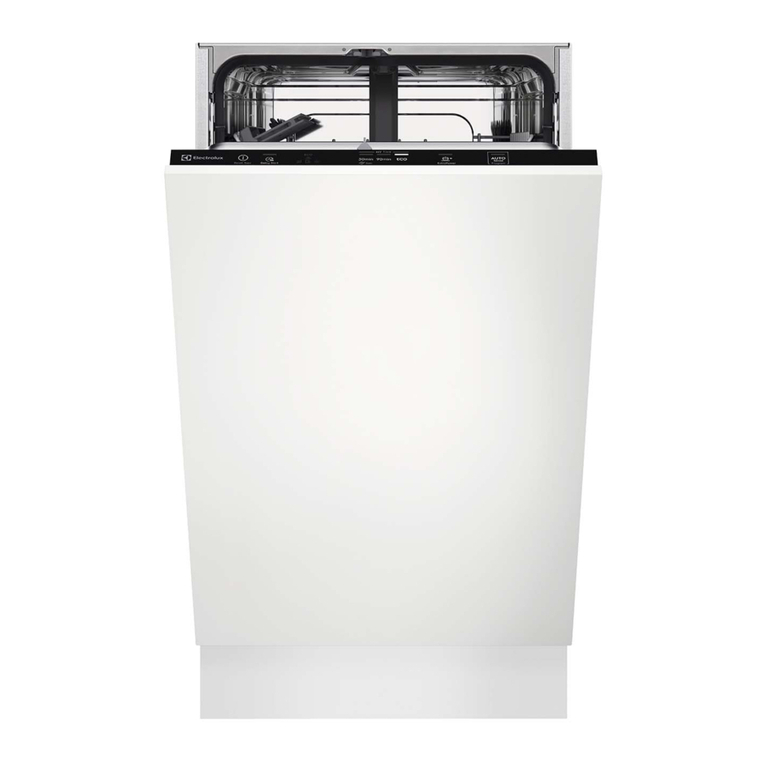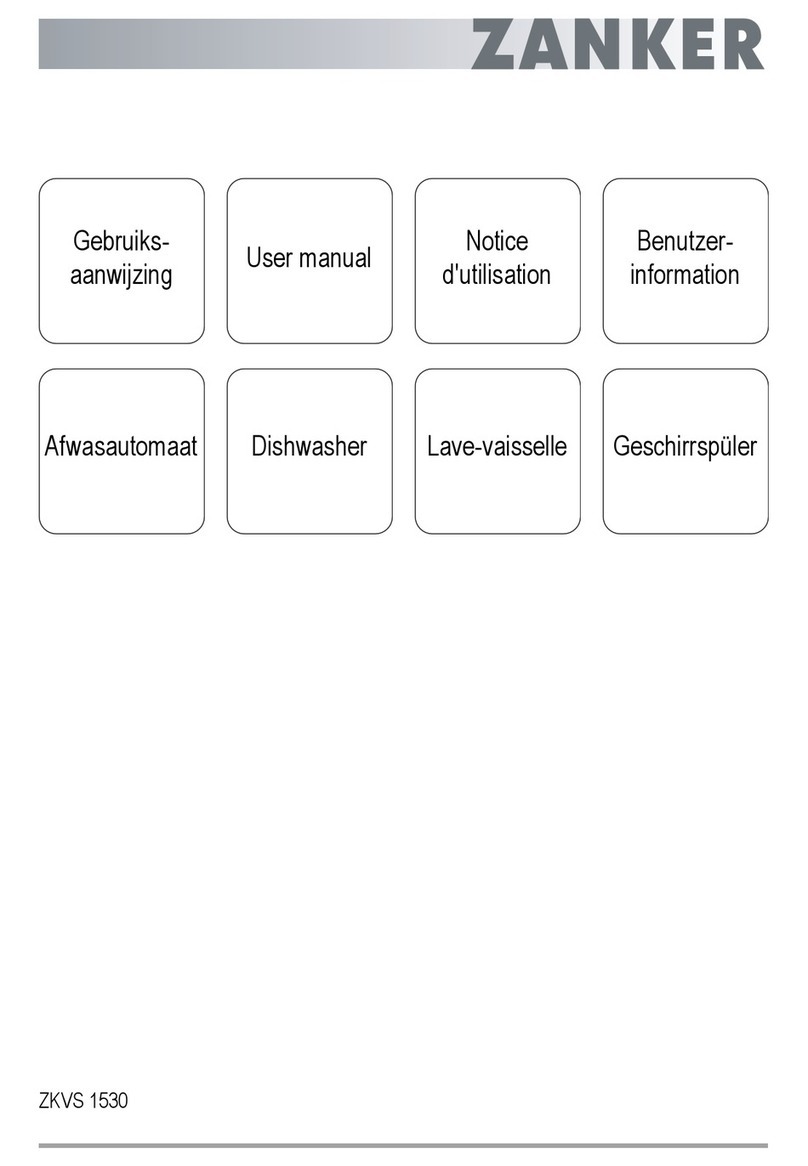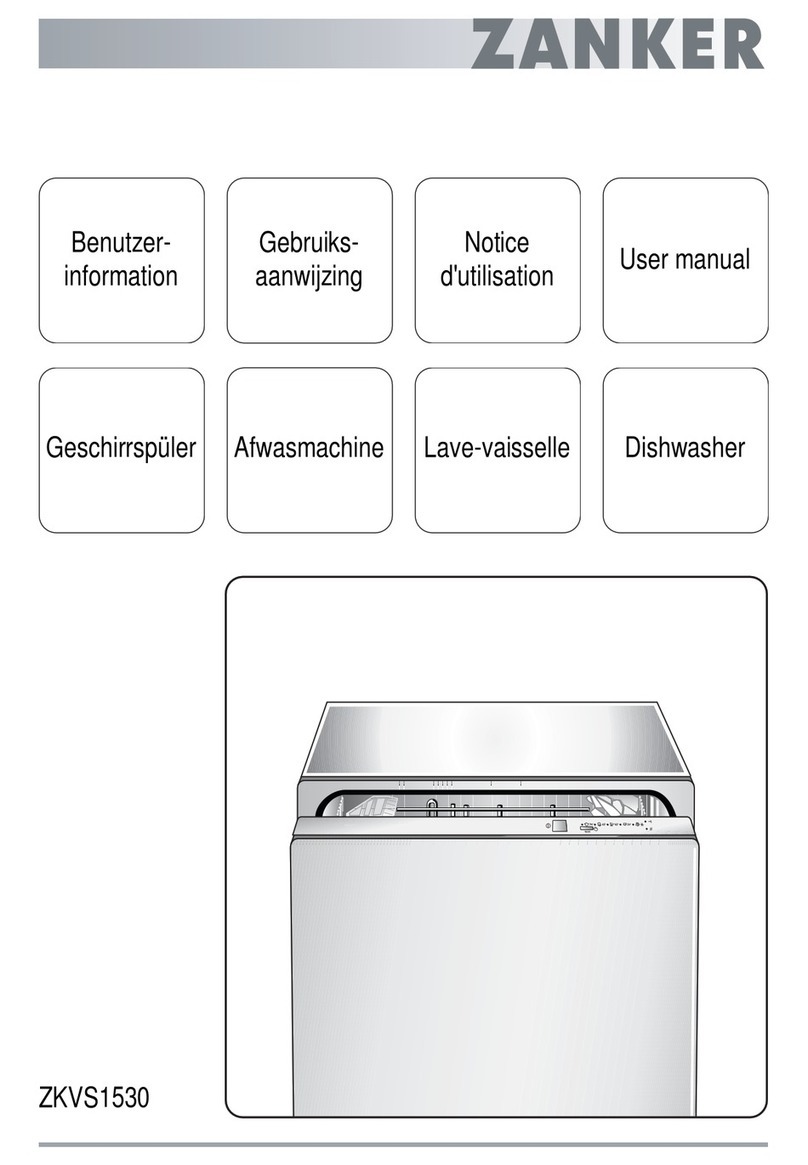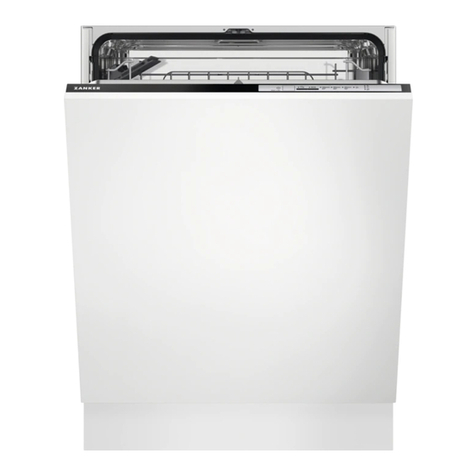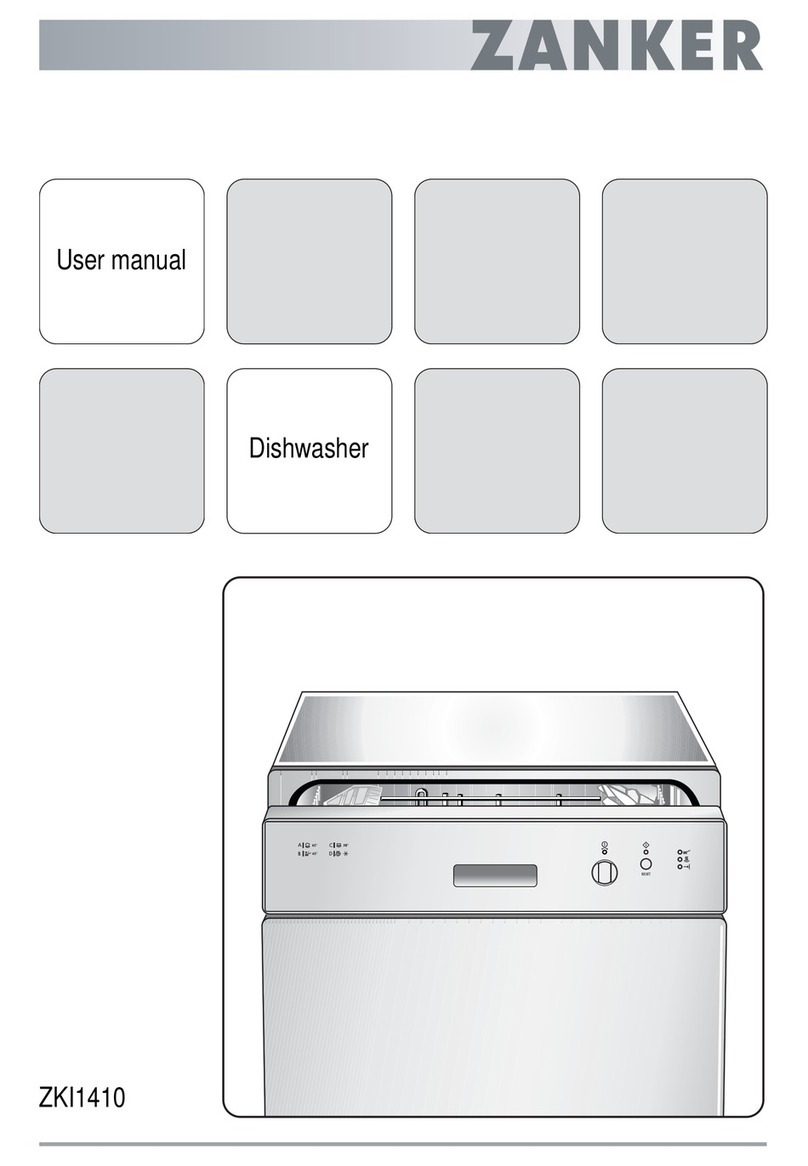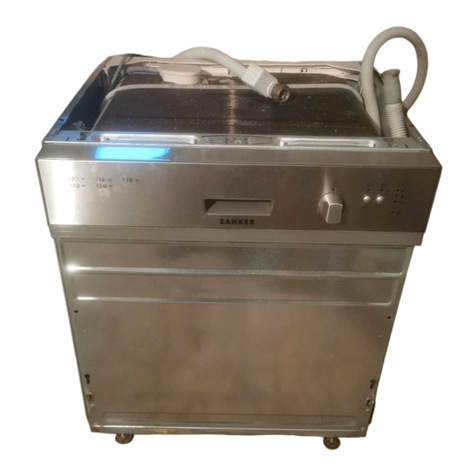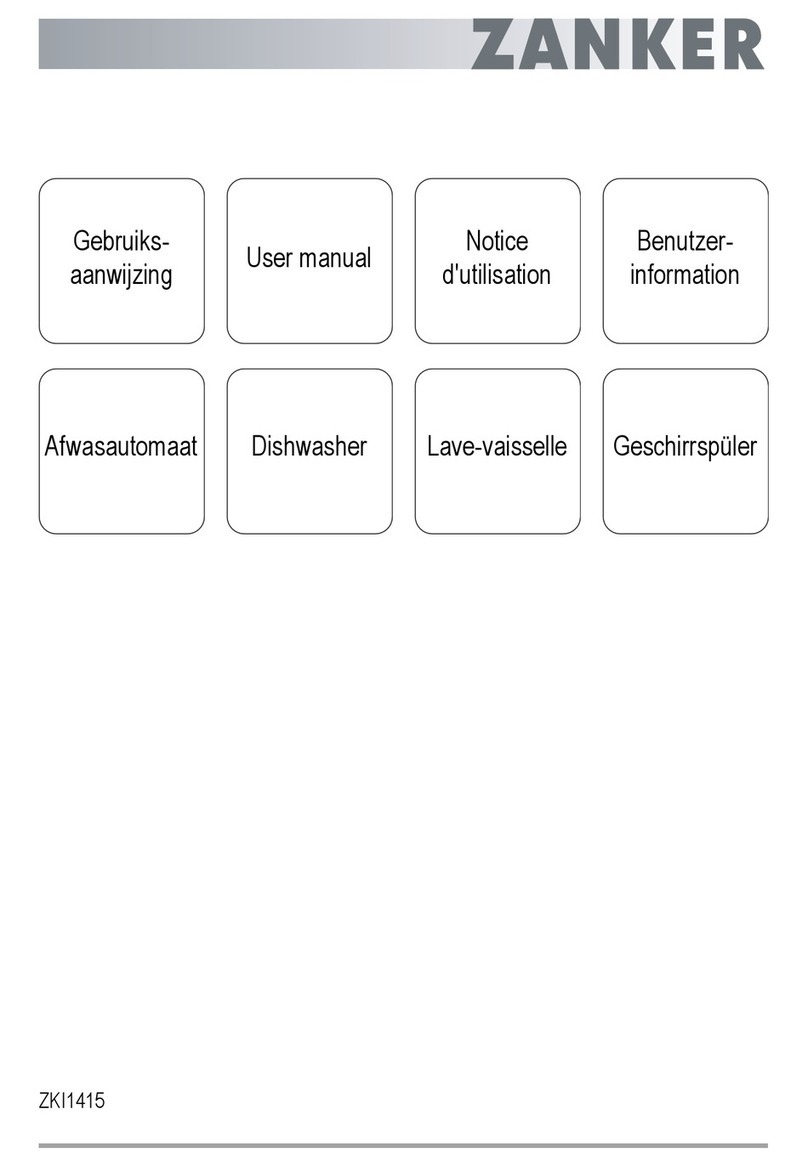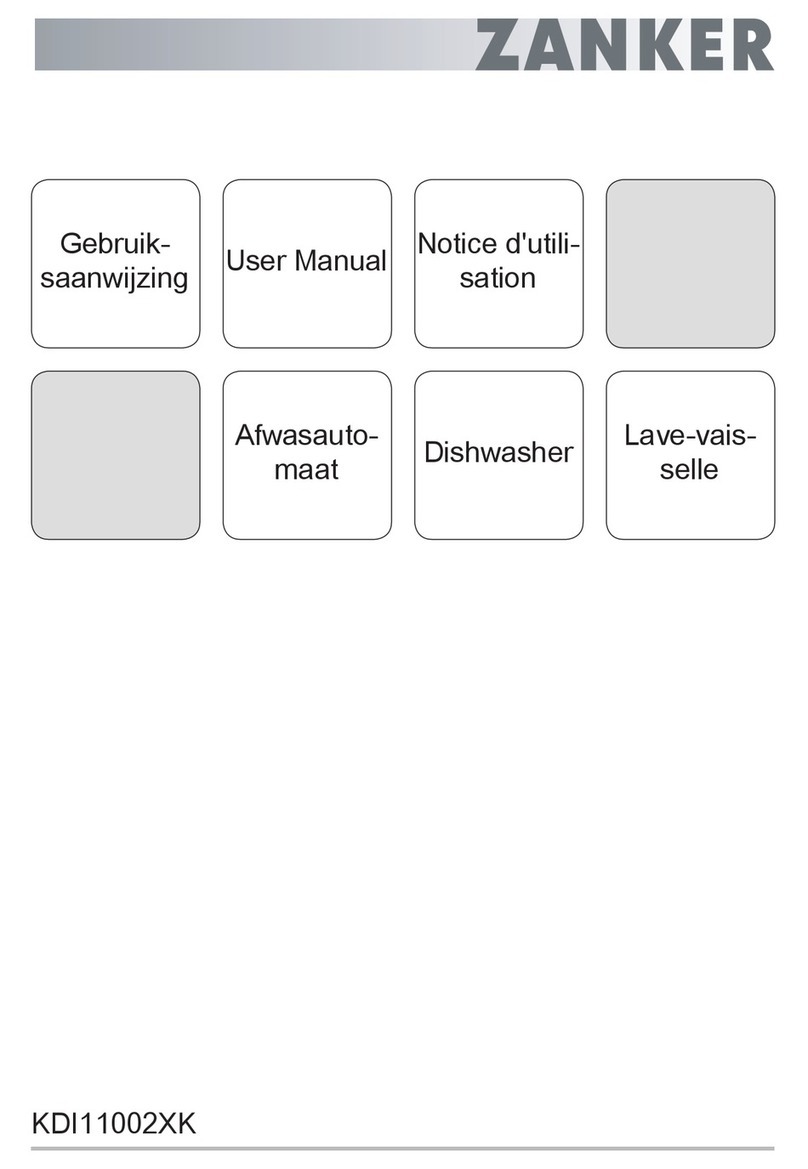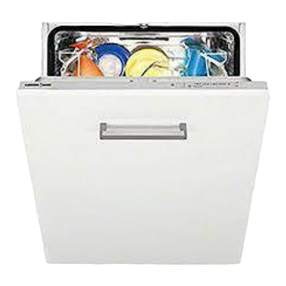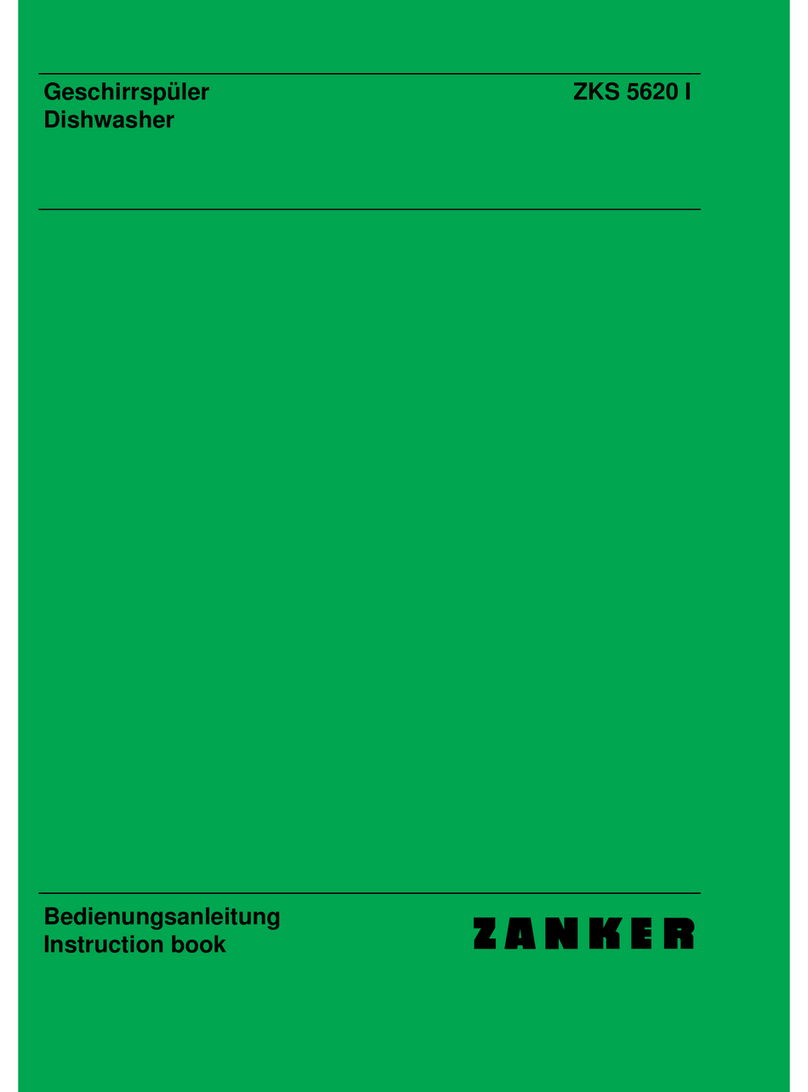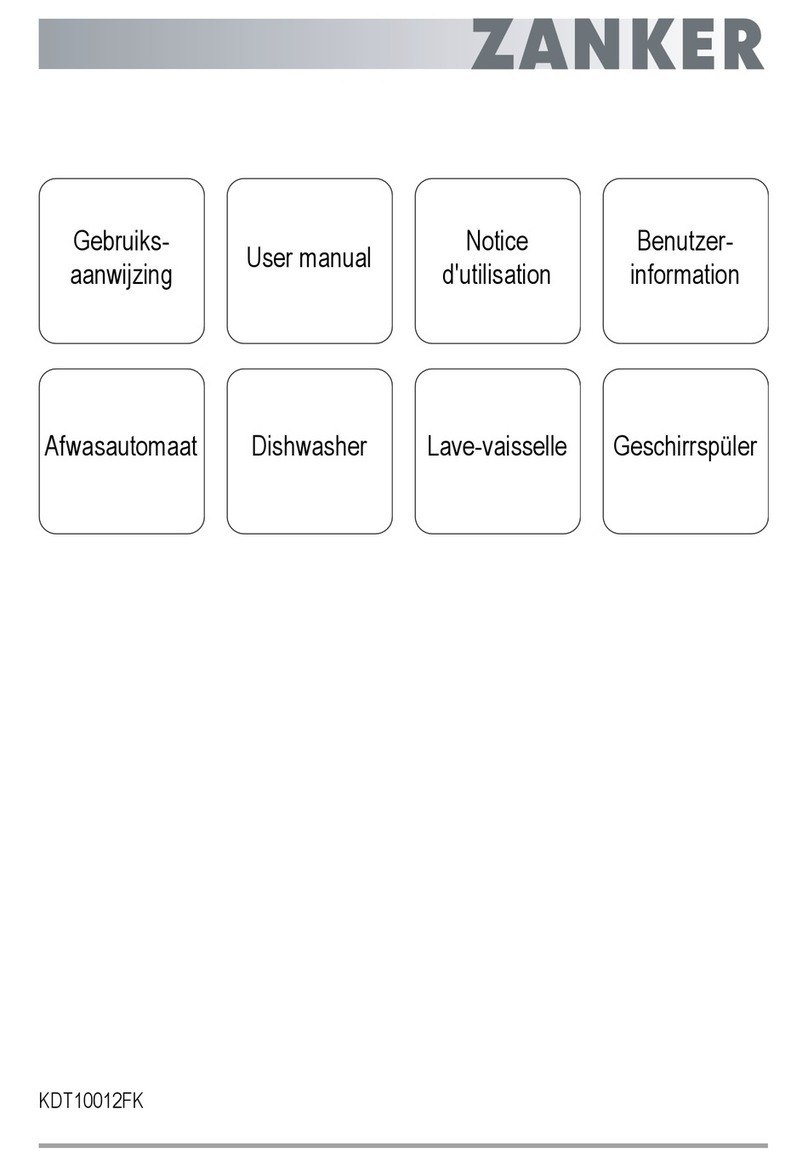23
PBR07GB
Rinse aid
The use of this liquid ensures thorough rinsing, spot
and streak free drying, making the water run quickly
off the dishes for sparkling results. It is automatically
added during the hot rinse. The dispenser, which is
positioned inside the door, holds about 110 ml of rinse
aid, which is sufficient for 16-40 dishwashing pro-
grammes, depending upon the dosage setting.
Filling with rinse aid
Open the container by turning the lid (A) anticlockwise.
Add rinse aid until the container is completely full (ap-
prox. 110 ml). The indicator (B) will be completely
dark.
Top up with rinse aid when the indicator (B) becomes
clear (approx. 70 - 80 ml).
Remember to CLOSE the lid after every refill.
Caution
Clean up any rinse aid spilt during filling with an
absorbent cloth to avoid excess foaming during the
next wash.
Adjusting the Dose
According to the finish and drying results obtained, adjust
the dose of rinse aid by means of the 6 position selector
(C) (position 1 - minimum dose, position 6 maximum
dose). (Start from position 3). Gradually increase the
dose if there are drops of water or lime spots on the dish-
es after washing. Reduce it if there are sticky whitish
streaks on the dishes.
Caution: Do not put liquid detergent into the rinse aid
compartment
Use of detergent
Before starting any of the dishwashing programmes,
except for the Rinse and Hold programme, load the
detergent in the dispenser.
Use only tablets, powder or liquid detergents specifi-
cally designed for domestic dishwashers.
Unsuitable detergents (such as those for washing by
hand) do not contain the right ingredients for machine
washing and hamper correct functioning of the
machine.
To open the dispenser lid, pull the catch (D).
To help you to correctly
dose the right amount of
detergent, inside the con-
tainer there are two refe-
rence marks:
- MIN = 15 ml
- MAX = 30 ml
All the programmes with
prewash required a small
extra amount of detergent
to be poured over the dis-
penser’s lid as shown in
the picture.
The amount of detergent to be used varies depending
on how soiled the dishes are and the type of dishes
being washed. We recommend the amounts shown in
the programme chart .
After filling the dispenser with detergent, close
the lid.
At the end of any washing programme the lid is always
open, ready for the next wash.
Since not all detergents are the same, you should
also consult the instructions on the packet.
Remember that insufficient quantities of detergent will
produce poor washing results whereas an excessive
amount of detergent does not improve washing
results and is also wasteful.
Using no more than the correct amount of detergent
also contributes to reducing pollution.
Phosphate free detergents with enzymes
In these low-alkaline compact powders the environ-
ment unfriendly components have been replaced by
natural enzymes and other more biodegradable sub-
stances. The enzymes deploy their full dirt dissolving
power at a temperature as low as 50°C.
By choosing the Bio-programme you can therefore
achieve the same cleaning results that would other-
wise be achievable only with 65°C programmes and
conventional detergents.
These new compact powders are generally
phosphate-free. As phosphates have water softening
properties, we suggest you add salt to the salt
container even if the hardness of your water is as low
as 4 °dh (7 °TH).
This will avoid lime deposits on crockery and the inner
tub.
6
5
4
3
2
1
6
5
3
2
1
C
B
BR04 A
D
MIN
MAX
DE07
DE02

